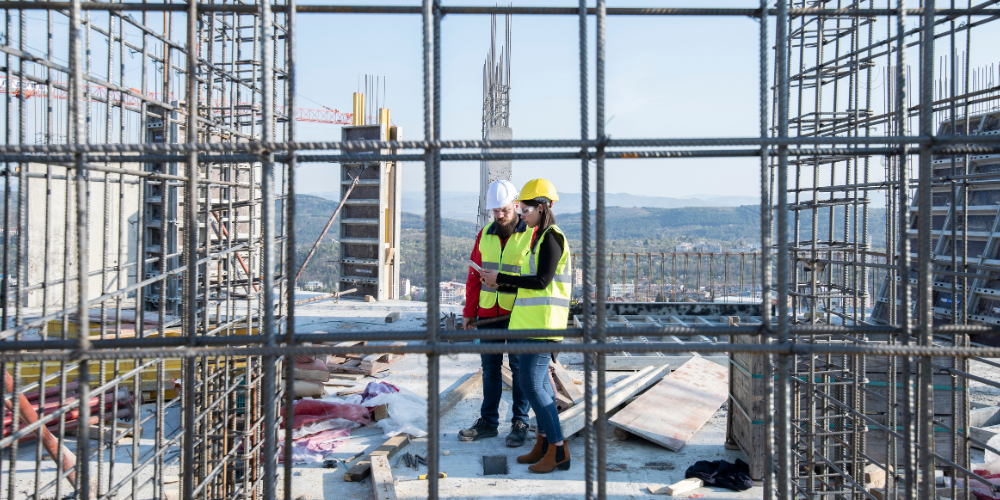


News I published 26 July 2021
Growth in architects’ BIM usage slower than expected
Growth in architects’ BIM usage slower than expected
In 2019, usage of Building Information Modelling was booming among European architects. Architects’ BIM usage had been growing faster in the 2017-2019 period than ever before. The same goes for the share of projects in which BIM was being used, and ever more stakeholders in the construction value chain were picking up BIM as well.
On top of that, 89% of all European architects were familiar with BIM in 2019, and an increasing amount of them who were not using BIM yet indicated to be planning to start using BIM in the next two years or so. All this made the future of BIM look blindingly bright, and based on these indicators we even forecasted BIM usage among architects to grow from 38% in 2019 to a whopping 53% in 2021.
After two years of unimaginable events that touched all our lives, we take another look at BIM usage in eight European countries in USP Marketing Consultancy’s Q2 2021 European Architectural Barometer, to see what remains of the bright BIM picture we forecasted two years ago.
BIM did not grow as much as we expected
Clearly, the surge in BIM usage that we expected did not happen. Instead of growing to 53%, the share of European architects using BIM only grew from 38% in 2019 to a mere 44% in 2021. We are the first to admit that the forecast of BIM usage we created in 2019 was off by a fair bit, and also the first to ask the question of why? What happened to European architects’ gusto to add BIM to their repertoire, which they so clearly indicated in 2019?
The pandemic does not explain everything
At this point, it is easy to drop an inevitable c-word and blame the corona pandemic, and for good reason. To adopt BIM, architectural firms have to invest money and time. The past two years have not been easy on any of us and the pandemic has caused a lot of economical unrest, resulting in a poor climate to dedicate large investments to innovations like BIM.
Our results indeed show that architects are struggling with such investments at the moment, as a quarter of them indicate the reason for not yet working with BIM to be that the investments to do so are too big. Although it is reasonable to assume that this is a direct impact of the pandemic creating a volatile economic situation that makes architects more reluctant to invest in BIM, it is by no means the only explanation.
BIM growth reduced on more than just the architectural front
Another reason to not have yet started with BIM that was mentioned by even more of the European architects (27%) is that they do not see the benefits for their organisation. Also, lack of demand from private or even public clients is given as the reason for not adopting BIM way more often than in 2019. These results show that architects are not just reacting to a volatile situation created by the pandemic, but to a wider context in which BIM growth has declined.
This line of thought is supported by other figures. The above graph shows that the percentage of architects’ projects in which BIM was used has not really grown over the past two years. Aside from that, our results show that the share of turnover derived from BIM projects has not grown significantly either. All this shows that aside from being less inclined to invest in BIM in a volatile economic situation, the lack of increasing demand and reward for such investments have possibly stopped architect from adopting BIM even more.
What about the future?
Given recent events, it remains hard to predict how BIM usage of architects will develop in the coming years. The question remains whether demand and reward for architects adopting and using BIM has not grown because of an anomaly like the pandemic or because of other reasons. If demand picks up again after the pandemic, BIM adoption among architects may accelerate again as well, but it will differ vastly between countries.
In countries where BIM is already used by a lot of architectural firms, like the Netherlands, not much significant growth may happen due to saturation. At the same time, in other countries where BIM is less prominent yet, the coming years may show growth depending on the development of the economic situation and other contextual factors. The point is to keep your finger on the pulse of the regions you operate in, of which the BIM heartbeats differ vastly from country to country.
For more detailed and country-specific information we refer you to the Q2 2021 report of USP Marketing Consultancy’s European Architectural Barometer.

Read more about the subject


18 July 2024 I Dirk Hoogenboom
Willingness to invest of European consumers in sustainability improvements of their houses lower in 2024 than in 2023


02 July 2024 I Dirk Hoogenboom
BIM adoption among European HVAC installers remains low


06 June 2024 I Maja Markovic
Sustainability in the electrical installation sector; slow but steady growth


06 June 2024 I Dirk Hoogenboom
Trends in construction material usage

Fresh Insights Await
Our latest reports
Delve into the newest findings across various market segments, crafted for a cutting-edge overview. Explore our latest reports, brimming with up-to-date data, trend analyses, and in-depth examinations, all tailored to provide you with a comprehensive understanding of the current market dynamics.
Construction
Home Improvement
Installation
Construction
Trends in material usage Q1 2024
2024 102 pages
Explore the evolving trends in material usage among European architects in Q1 2024. Delve into the factors driving material preferences and the impact on construction aesthetics and sustainability.
1,850 Euro
Construction
Media orientation H2 2021
2024 161 pages
Explore the media engagement patterns of contractors to optimize your marketing strategies. Dive into a pool of insights that unveils how contractors interact with different media channels.
6,300 Euro
Construction
European Green Deal Q4 2021
2024 88 pages
Explore the impact and reception of the European Green Deal among architects. Understand how the initiative is influencing architectural practices and sustainability measures.
1,850 Euro
Construction
BIM Q4 2023
2024 246 pages
Key insights regarding the BIM usage and behaviour of European architects, and our latest future building volumes prognoses
1,850 Euro
Construction
Purchase Channels H2 2023
2024 123
Explore the buying and ordering behaviour among contractors in H1 2023. Uncover the key channels used, share-of-wallet and much more.
6,300 Euro
Construction
Behavioural segmentation and media usage report 2023
2023 75 pages
This report provides a comprehensive overview of purchase behaviour, products, and media usage, specifically focusing on European handymen. It delves into how handymen use media, and for what purposes, and examines their habits and preferences in terms of purchasing behaviour.
8,400 Euro
Home Improvement
DIY versus DIFM Q4 2021
2024 113 pages
This report is a must-have if you’re in the home improvement industry. It provides a wealth of information on the behaviour of DIY and DIFM consumers, their motivations, and the factors that influence their purchasing decisions.
3,150 Euro
Home Improvement
DIY or DIFM Q4 2023
2024 70
Explore the prevailing trends between DIY and DIFM in Q4 2023. Understand consumer preferences and the factors influencing their choice between DIY and DIFM.
3,150 Euro
Home Improvement
Branding Q3 2023
2023 93 pages
This report offers an extensive overview of the home improvement industry, with a focus on branding and the most popular brands within different categories. Within this report, you will gain insights into how customers perceive home improvement brands and what motivates them to buy certain products.
3,150 Euro
Home Improvement
Purchase channels Q2 2023
2023 114 pages
The European Home Improvement Monitor offers valuable insights on purchase channels in the European home improvement industry, examining the evolving preferences and behaviors of consumers across traditional retail and emerging online platforms.
3,150 Euros
Home Improvement
Purchase Channels Q2 2022
2022 124 pages
Uncover the prevalent purchase channels in the home improvement sector during Q2 2022. Delve into consumer preferences and the factors influencing their purchasing decisions.
3,150 Euro
Home Improvement
Do-it-yourself or do-it-for-me Q4 2022
2022 93 pages
Explore the prevailing trends between DIY and DIFM in Q4 2022. Understand consumer preferences and the factors influencing their choice between DIY and DIFM.
3,150 Euro
Installation
Smart & Connected Products Q2 2024
2024 120 pages
This report provides a comprehensive view of the attitudes of installers toward smart building solutions, specifically among electrical installers and their clients. In the report, you will find insights into the installers' experiences with installing smart products and the willingness of end users to invest in such solutions, as well as their motivations and pain points.
3,150 Euro
Installation
Sustainability Q1 2024
2024 81 pages
Delve into sustainability trends in the home improvement sector in Q1 2024. Discover consumer preferences and the shift towards eco-friendly home improvement solutions.
3,150 Euro
Installation
BIM Q1 2024
2024 84 pages
The European Mechanical Installation Monitor report provides a detailed analysis of the plumbing and HVAC industry. This report specifically focuses on BIM adaptation in the industry.
2,650 Euro
Installation
Sustainability Q1 2024
2024 99 pages
The European Electrical Installation Monitor report provides a detailed analysis of the sustainable solutions in the installation industry. This report specifically focuses on sustainability aspects in the industry.
3,150 Euro
Installation
Challenges toward sustainable future Q4 2021
2024 111 pages
2,650 Euro
Installation
Purchase channels Q4 2021
2024 106 pages
Delve into the training needs within the electrical installation sector. Understand the areas requiring skill development to meet the evolving demands of the industry.
3,150 Euro








